This paper considers the role of music and sound possibly depicted in the rock art of the Central Majes Valley (southern Peru) in view of the Middle Horizon musical instruments found at La Real (and Uraca).
By Maarten van Hoek
*
*
*
Music in Majes Valley Rock Art, Peru
October – 2022 / Revised Version – September 2023
Maarten van Hoek
*
Introduction
It is beyond any doubt that sound and music often played a crucial role in many rituals of several ancient Andean civilisations during a very long time (even lasting well into modern times). Well known are the ominous acoustic effects within the internal structures of Formative Period Temple Complex of Huántar de Chavín in the High Andes of northern Peru. Additionally, at many archaeological excavations musical instruments have been unearthed. It is almost certain that – worldwide – sound and/or music often played a possibly crucial role at rock art sites. It is therefore remarkable that – in general in Andean rock art – depictions of musical instruments and/or musicians are relatively (extremely) scarce, depending on the area investigated. For instance, the coastal rock art region of northern Chile and southern Peru has relatively many petroglyphs of possible musicians (I will explain the word “possible” further on), while the rock art region immediately to the north – the area of the Majes Rock Art Style (MRAS); our study area – has an extremely low number of petroglyphs possibly depicting musicians.
Why do I use the term “possibly”? Because in many instances it is (most) uncertain whether indeed a musician has been depicted. Although instantly recognisable examples are very rare in Andean rock art, some unambiguous examples have still been recorded, like the three Post-Columbian petroglyphs of anthropomorphic figures playing the harp at the Pre-Columbian rock art site of Chillayza-Norte in northern Chile (Van Hoek 2016a). Yet the relatively many rock art images of anthropomorphic figures purportedly playing a wind instrument are – in general – often dubious (Van Hoek 2010a). Figures often referred to as flute-players mainly concern anthropomorphs holding an (often) straight object which emerges (somewhere) from the mouth area. However, such figures may equally be smoking tobacco through some sort of pipe or perhaps even inhaling drugs (for more – non-Andean – alternatives and discussion see: Van Hoek 2010a). Hence my preference to label those figures as “Flute-Players”, expressing my uncertainty.
It is nevertheless certain that certain members of prehistoric communities in the Majes Valley of southern Peru were playing wind instruments. This is for instance evidenced by the excavation of unambiguous bone whistles and/or flutes from the ancient burial site of La Real (accidentally discovered in 1995), located on the west bank of the Majes Valley (Figure 1).
Figure 1. Location of La Real in the Majes Valley of southern Peru. Map © by Maarten van Hoek, based on the map by OpenStreetMap – Contributors.
Click any illustration to see an enlargement. Open the enlargement in a new window to see details even better.
In a most informative paper Alaica et al. write that 40 [or 42?; see Alaica et al. 2017] musical instruments were excavated from the in situ mortuary cavern or in the slightly messed-up contexts associated with its initial discovery (Alaica et al. 2022: 3; NB. 3 is the page number of the PDF downloaded by me in September 2022, while the original numbering in the December-2022 publication will probably be different; my addition [ ]). Besides those wind instruments, also at least one example of the antara (the Andean pan-flute) was found in a late Middle Horizon context at La Real (Alaica et al. 2022: 10; Jennings 2012: Fig. 11.16).
Additionally they also mentioned that bone wind-instruments are common finds at the burial site of Uraca (Alaica et al. 2022: 2). Also a reed pan flute was discovered at Uraca (Scaffidi 2018: 186). The ancient burial site of Uraca-Sector-1 is situated only 10 km south of La Real and is also located on the west bank (but incorrectly situated on the east bank of the valley by Alaica et al. [2017]; repeated in Alaica et al. [2022: Fig. 1]). Several works deal with the excavations at La Real, especially the most informative book edited by Yépez Álvarez and Jennings (2012). However, this study will mainly deal with the paper by Alaica et al. (2022), especially focussing on the rock art context.
*
GeoGraphical Context of La Real
The ancient cemetery of La Real is found on the west bank of the impressive Majes Valley (Figure 2) in southern Peru, 107 km WNW of the city-centre of Arequipa and 63 km inland. The UTM co-ordinates of the site are 768071.00 m O and 8215777.00 m S in Google Earth 2020. Originally located on an alluvial fan at the very edge of the barren desert (at an altitude of 589 m asl) and directly overlooking the fertile floodplain of the Majes River (the edge now only about 300 m to the east; at 552 m asl), La Real is now (according to Google Earth 2020) found in the completely built-up area of the village of La Real and cannot be inspected anymore.
Figure 2. Location of La Real (orange circle) in the Majes Valley of southern Peru. The area between the two vertical lines is the area approximately seen in Figure 3. Map © by Maarten van Hoek, based on Google Earth.
*
La Real within the Local Rock Art Context
La Real is also situated in an area that is very rich in rock art sites. This wealth of mainly petroglyphs is explained by the fact that the valley (with a vast fertile floodplain) forms the hub of an enormous network of ancient trails. Moreover, in my opinion the area and its rock art is definitely linked to the Apu Coropuna, the Sacred Mountain of the region. Some 2645 m due east across the Majes Valley are the rock paintings of Chancharray (Van Hoek 2022a: 5), while 3556 m to ENE is the impressive petroglyph site of La Laja, situated high above the valley floor at an altitude of 890 m. Reaching La Laja involves an arduous climb of 700 m in length up a very steep sandy slope. But it is worth the trouble, not only for the rock art (Van Hoek 2022a), but also for the impressive views across the Majes Valley, which also involve the burial site of La Real (unfortunately not visible in Figure 3), but it is remarkably that the wide panorama from La Laja does not include any view of Apu Coropuna.
Figure 3. View from the rock art site of La Laja across the Majes Valley, showing the huge contrast between the fertile floodplain (life) and the barren dessert (death). La Real is located only a few hundred meters further south (see Figure 2). Photograph © by Maarten van Hoek.
Roughly 4000 m to the south – also on the west bank – is the rock art site of Querullpa with a mix of petroglyphs and pictographs on a rather hard to reach steep cliff. Approximately 12 km to the SSW from La Real is the biggest rock art site of the Andes, Toro Muerto (completely invisible from La Real) and 16 km to the SSE is the equally important rock art site of Alto de Pitis, which is also completely invisible from La Real, because of the high hill just north of Uraca that projects eastwards into the Majes Valley. North and northeast of La Real are some minor rock art sites, like El Recodo and Huancarqui on the east bank, and Caspani (or Caspini) on the west bank directly opposite La Laja (see Figures 2 and 3). Further north and south in the valley more (minor) rock art sites have been recorded (Van Hoek 2013a: Fig. 3 [map outdated and incomplete]; 29).
Remarkably, although the study by Alaica et al. does mention the existence of rock art sites in the neighbourhood of La Real, actually only Toro Muerto is (disappointingly only very briefly) referred to (2022: 2). The sites of La Laja, Chancharray (Van Hoek 2022a: 5) and Alto de Pitis (Van Hoek 2013a) and all of the “minor” sites are not mentioned at all, while especially the sites of Caspani, Chancharray and La Laja are part of the cultural and ritual landscape directly around La Real. Moreover, in my opinion it is important to know that much of the rock art in the Majes Valley predates the burial site of La Real, which dates from the Middle Horizon (600 – 1000 CE). Despite the fact that only two times an (again very brief) reference to the local rock art can be found in their study, those two remarks still offer a good reason for me to comment on the rock art aspects of their paper.
The first remark that I will comment on, reads as follows. Alaica et al. (2022: 2; my emphases in bold and addition in black) state that earlier than the mid-first millennium CE (according to Alaica et al. 2022: 2) the employment of wind-instruments is suggested at the nearby rock art site of Toro Muerto where [1] dancing figures play [2] a range of musical instruments. I have some serious problems with their “suggestion” and especially with their two suggestions [1 and 2], as I will explain.
First of all, Alaica et al. do not describe or illustrate any of the petroglyphs (those suggesting the use of wind-instruments) they claim to be earlier than the mid-first millennium CE. Therefore not a single reader of their study can check: 1): which petroglyphs at Toro Muerto they refer to, and 2): whether indeed those petroglyphs are earlier. The latter problem is even impossible to check for any researcher experienced in Majes rock art, because there is no way to ascertain the absolute age for most (if not all) of the prehistoric petroglyphs at Toro Muerto (or at rock art sites elsewhere in the area). I again must highlight the fact that dating Andean rock art in general is problematic, especially in desert environments. My objections regarding dating also concern the three petroglyphs – labelled The Purported “Flute-Players” of Toro Muerto in this study – that are important in the current analysis. Thus far also those three crucial petroglyphs are impossible to date.
Moreover, Alaica et al. mention dancing figures that play a range of musical instruments (my emphases), again without offering any illustration (which, in my opinion, is highly desirable in such an important study about music in prehistoric Majes Valley). My second objection concerns the absolute statement that the figures they refer to are dancing. Do they refer to the icon of the Majes “Dancer”? Unfortunately that is not clear.
After about 20 years of intensively studying Majes rock art, I maintain that I am not aware of a single petroglyph of a dancing anthropomorphic figure that unmistakably plays a musical instrument, not at Toro Muerto and not anywhere else in the MRAS. Apart from the possible wind instruments depicted at only three petroglyphs at Toro Muerto (that will be discussed further on), I am only aware of the very rare petroglyphs of static anthropomorphic figures holding a fully pecked circular object that has been interpreted by Hans Dieter Disselhoff as a tambourine (1968: 31). However, I have suggested that it is equally possible that those purported “drums” represent “Trophy” heads (Van Hoek 2010b: 9; 2023a).
If indeed Alaica et al. (2022) refer to the Majes “Dancer”, then it proves that neither Aleksa Alaica, Luis Manuel González La Rosa, Willy Yépez Álvarez or Justin Jennings is aware of the many guises of the Majes “Dancer”, a specific Majes icon, which has exhaustively been discussed and illustrated by me (Van Hoek 2022b). Moreover, about 20 years ago I already seriously questioned whether the Majes “Dancers” were really dancing (Van Hoek 2003: 169), hence the use of quotes in my Majes “Dancer” label (see also Van Hoek 2022b). In this study I will demonstrate (again) that any claim that the Majes “Dancers” are also playing a musical instrument is completely unsubstantiated and therefore such a claim or even such a suggestion should therefore be avoided.
My third worry concerns the rather absolute use of the term “range”, which in my opinion implies that a variety of different musical instruments (like the Andean quena, the focedor de clarín, the auka and the antara) has been depicted in the rock art of Toro Muerto. This definitely is not the case (see also Van Hoek 2022b). Only the quena is just possibly depicted in MRAS, as I will demonstrate when describing the three Purported “Flute-Players” of Toro Muerto. Yet it is even questionable whether in all three cases those Purported “Flute-Players” of Toro Muerto actually hold a wind instrument like the quena, or a simpler bone wind instrument, comparable with those found at La Real.
*
The Purported “Flute-Players” of Toro Muerto
From 2002 onwards my wife Elles and I visited Toro Muerto many times, and in 2004 we noted (for the first time) a boulder with a horizontal top surface (Panel TM-Bb-009A) bearing the very clear petroglyphs of a feline and a “Trophy” Head (Van Hoek 2021a: Fig. 7). Yet, only in 2009 we noticed (and possibly our recording is also the earliest recording ever) a most interesting set of two petroglyphs on a much sloping side-panel (Panel TM-Bb-009B). Earlier I published an illustrated description of those two petroglyphs (Van Hoek 2010b: Fig. 3), which will now be updated below (simultaneously correcting my earlier – too absolute – remarks about those images in Van Hoek 2021b: 70 and 2022b).
However, I find it remarkable that Alaica et al. do not refer to this set of petroglyphs illustrated in my 2010-publication (still accessible on the internet [last accessed October 2022] and also available as PDF at Academia), especially as I informed Justin Jennings (one of the co-authors of their paper) about those interesting petroglyphs a few years ago. Possibly for that reason Justin Jennings asked me in 2020 if I could provide more information about those petroglyphs in the context of a forthcoming study about music instruments excavated in Majes (referring to the 2022-paper by Alaica et al.?). Of course I was happy to send him some information and several photos of the two panels in question. But strangely nothing of that shared information was eventually used by Alaica et al. (2022).
*
The Two Purported “Flute-Players”
Interestingly, Panel TM-Bb-009B bears two almost identical anthropomorphic figures that carry a “Trophy” Head each. Because Panel TM-Bb-009B faces more or less north, towards the sun at noon during much of the year, the rather weathered and patinated images are often hard to see, which may explain why we passed this boulder several times without noticing the ensemble. Possibly also for this reason Panel TM-Bb-009B is not illustrated in Núñez Jiménez (1986), nor in any other publication that I could check. However, the boulder has been noted before (probably because of the distinct petroglyphs on the upper Panel TM-Bb-009A), as it has a 4-digit number painted in black on one of the sides. It is uncertain, though, whether the two unique Purported “Flute-Players” / “Trophy” Head Carriers on Panel TM-Bb-009B were also noted at that time. For that reason my wife and I claim to have been the first to have recorded this set of petroglyphs and – a year later – also the first to have published an illustration and a description of the two Purported “Flute-Players” (Van Hoek 2010b).
The two “Trophy” Head carriers / Purported “Flute-Players” are standing side by side (Figures 4 and 5; small part in my drawing retouched by the author to restore natural [?] damage that is visible in the photographs). Both anthropomorphs are (fully?) frontally depicted and seem to have some kind of sex indication near the genital areas, but these are too uncertain to explicitly determine if the two figures are male or female.
Yet there are a number of remarkable features concerning this duo. First there is the resemblance between the shape of the heads of the two anthropomorphs and the “Trophy” Head they carry. All four heads are rather oval shaped and have (three or four) short lines emerging from them. The real heads have short lines running upwards and are suggestive of real hair, while the two “Trophy” Heads have lines that run downwards from the “chin-area”, which may represent the hair on the dead person’s head. What furthermore unites all “heads” is that they all have only one central dot (the larger figure’s dot being indistinct), possibly as a “pars pro toto” for eyes, or possibly for all facial features. Petroglyphs with intentionally only one dot depicting an eye have been recorded in other biomorphs at Toro Muerto, for instance in the feline on Boulder TM-Cb-001 (Van Hoek 2021a: Fig. 19: inset A). Importantly, the resemblance of all heads of the two Purported “Flute-Players” might indicate that these “Trophy” Head Carriers and the persons once attached to the “Trophy” Heads may have been members of the same (local!?) community.
Equally interesting is the design that has been depicted on/inside the thorax of the smaller figure. It is an oval with three lines emerging from the upper end, similar to real hair on a life head, as well as three lines resembling the characteristic “hair from the chin area” of a “Trophy” Head. It also has one single dot in the centre. The design reflects and thus links this head with the heads of the “Trophy” Head Carriers with the “Trophy” Heads they carry. Tentatively, it may be regarded as a “fifth head”, possibly symbolising an important Andean duality: life (epitomized by the three upward pointing lines representing the hair on a person’s life head) and death (the three downward pointing lines representing the hair of a “Trophy” Head). Importantly, the one dot in the Thorax “Trophy” Head and all other four heads may be an indication that all five heads have in fact been depicted laterally. There is another telling indication that indeed this may have been the case, which will be discussed now.
Even more interesting is the fact that both anthropomorphs have their right arm raised and seem to hold a short, straight object that could be some kind of wind instrument. Although the upper part of the ensemble is damaged in places (I have retouched my drawing of Figure 4 to subjectively reconstruct the damaged part), those straight objects seem to be held against the right-hand side of the head, suggesting that that is the place where the (absent) mouth is situated. If this indeed is the case, then the heads of the two carriers are not shown frontally, but in profile (as also the single “eye-dots” suggests). This also seems to be confirmed by the position of the lines representing the hair. Those lines are only found on one half of the head, enhancing the impression that the “Trophy” Head Carriers are looking to the right (against the wind?). But are they really playing a wind instrument?
Figure 4. The two Purported “Flute-Players” / “Trophy” Head Carriers on Panel TM-Bb-009B at Toro Muerto. Both photographs have been enhanced by me; the drawing has subjectively been restored by me around the ?-mark. Photographs and drawing © by Maarten van Hoek.
Figure 5. The two Purported “Flute-Players” / “Trophy” Head Carriers on Panel TM-Bb-009B. Also this photograph has been enhanced by me. Photograph © by Maarten van Hoek.
If that is the case, then – in 2009 – these two figures represented – as far as I know – the only Purported “Flute-Players” in the rock art repertoire of Toro Muerto and the neighbouring valleys (Van Hoek 2005: 30). And if the straight objects indeed are wind instruments, then they simultaneously are indications of male gender, as in prehistoric Andean societies only male persons were allowed to play the flute (Van Hoek 2005: 26). Likewise, Silverman and Proulx (2002: 136) argue that in Nasca iconography “Trophy” Heads are not depicted associated with women. As the “Trophy” Head and the flute are often part of the shaman’s regalia, I would like to tentatively suggest that the two figures on panel Bb-009B depict two male shamans involved in some kind of ritual, whether playing a wind instrument or inhaling drugs (not rejecting the idea that – in general – women can be shamans, though).
*
The Third Purported “Flute-Player”
However, in 2011 we visited Toro Muerto again and also searched the area where Boulder TM-Bb-009 was found by us earlier. To our surprise we discovered that on Boulder TM-Bb-010, which is located very nearby (Figure 6) and also surveyed and photographed during our previous visits, a third, previously unnoticed Purported “Flute-Player” petroglyph had been executed (position marked in Figure 6).
Figure 6. Boulders TM-Bb-009 and TM-Bb-010. Photograph © by Maarten van Hoek.
The image is rather small, fairly superficially executed and moreover rather deeply patinated and for those reasons may have escaped being noticed by us during earlier visits. Also this petroglyph seems to have been recorded by us for the first time. And again it is not illustrated by Núñez Jiménez (1986) and not referred to by Alaica et al. (2022), although a photograph of this third “Flute-Player” was published by me earlier (Van Hoek 2018a: Fig. 36). Moreover, a few years later I informed Justin Jennings about this specific petroglyph and in 2020 I sent him some photos to assist him with the preparation of a forthcoming study about musical instruments at La Real, which he informed me about (he was probably referring to the – then forthcoming – paper by Alaica et al. [2022]). Yet, despite my assistance and my earlier publications, the four authors apparently decided against including any relevant information regarding the three Purported “Flute-Players” in their 2022-paper.
The third “Flute-Player” petroglyph (Figure 7) is 20 cm tall and has two short legs, each with a small foot (yet no digits). One arm is drooping and seems to end in (three?) digits, but it certainly does not carry a “Trophy” Head. The outlined body is rectangular and has been decorated with a large X-mark. The right arm is curved and raised and almost touches a short object that emerges from the area where a mouth would be positioned. The head is small and circular and has no internal features (thus a central dot like with the first two figures is lacking). From the head also emerge one short line and a broader pecked area (a failure or an intended headdress?). Because the layout is somewhat different, it is possible that this “Flute-Player” is older or later (a “copy-cat”?) than the other two Purported “Flute-Players”.
Figure 7. Details of Boulder TM-Bb-010. Photographs © by Maarten van Hoek.
Yet, in my mind there is some doubt about this specific object representing a wind instrument. It is possible, but it seems that from the far end a short, upwards curved “plume” emerges (see Figure 7). This possible “discharge” (it may be a natural feature) may either represent sound or smoke. In the latter case, the figure may not be a “Flute-Player”, but an anthropomorphic figure using some tubular device for either smoking tobacco or inhaling drugs. If this is the case, then also the two (at least spatially and graphically associated) “Trophy” Head Carriers on Panel TM-Bb-009B may not be playing a wind instrument, but inhaling drugs.
If this is true as well, then I do not know of any other anthropomorphic or zoomorphic petroglyph in the Majes Valley (or in the neighbouring valleys) that is unambiguously playing a wind instrument (petroglyphs of zoomorphs purportedly playing a wind instrument have also been recorded in Andean rock art; see Van Hoek 2005; 2013b). But even when the three Purported “Flute-Players” are inhaling drugs through some kind of device, even then are those images still truly unique in MRAS.
Important in this respect is the fact that at La Real several objects relating to the use of hallucinatory drugs have been reported, among which also are nine simple straight objects (Yépez Álvarez 2012: Fig. 9.2; 206): “Cuchara molada de hueso con rostro de personaje y trocado con plumas, cuchara fragmentada con detalle figurativo de Anandenanthera colubrina, utilizados como componentes para inhaler”. These nine objects are not pipes, but small spoons, although tubes to inhale drugs may well have been used at La Real (Yépez Álvarez 2012: 211). Remarkably, the study by Alaica et al. (2022) does not seem to link the use of drugs with rituals involving the performance of music at La Real, before or after “the music died”. Also the combination of using drugs and playing music at rock art sites is not at all farfetched. For instance, the use of drugs has also tentatively been suggested to have taken place during certain rituals at the rock art site of Illomas (Jennings and Van Hoek et al. 2019: 12, 26).
*
Majes “Dancers” Playing a Wind Instrument?
In their study about musical instruments excavated at La Real Alaica et al. (2022: 2; my emphases and addition) state that at Toro Muerto there are dancing figures that play a range of musical instruments. They moreover state that clapping, singing, and dancing is common at events today, and that at least dancing can be seen in the rock art of the region (2022: 10; my emphases). Based on many years of rock art investigation in Majes I refute any absolute interpretation that certain petroglyphs at Toro Muerto depict dancing figures (Van Hoek 2022b).
The only “dancing” figures that I know of at Toro Muerto concern the numerous petroglyphs of the Majes “Dancer”. But again I repeat that it is still uncertain whether the icon of the Majes “Dancer” is in fact really dancing (Van Hoek 2003; 2018a; 2022b). Therefore, if Alaica et al. are not referring to the Majes “Dancer”, which “dancing” figures are they referring to then? To authenticate that reference, photographs are essential and yet not a single illustration regarding Majes rock art has been provided in their study. Moreover, what evidence do they have (and do not reveal in their publication) that those “dancing” figures play a range of musical instruments. Having scanned more than 1200 photographs of the Majes “Dancer” in the Majes Valley, I am certain that none of the Majes “Dancers” is playing any musical instrument at all. Neither is any Majes “Dancer” associated with a petroglyph unambiguously depicting a musical instrument.
Yet, the purported link between the Majes “Dancer” and music-making is not new. Many Majes “Dancers” are surrounded by enigmatic small abstract petroglyphs (short lines, dots and circles; see for instance Van Hoek 2022b: 71), which have been interpreted (without any proof, though) by Núñez Jiménez as “signos musicales o danzarios” (1986: 2259). Contradicting his interpretation is the fact that the – so far – only three petroglyphs of possible musicians at Toro Muerto (the three Purported “Flute-Players” on Boulders TM-Bb-009 and TM-Bb-010 discussed in this study) are not associated at all with such “musical” or “dancing” signs (see Figures 4, 5 and 7).
Yet, there are several petroglyphs of Majes “Dancers” that seem to carry or hold some sort of linear object. Most of the objects carried by Majes “Dancers” concern rather short, straight or slightly curved lines, that are often vertically, horizontally and/or diagonally arranged. They can depict sticks, staffs, weapons, pipes, musical instruments or any other kind of regalia. Moreover, it is even possible that in some cases those purported “objects” only belong to the abstract signs that often surround Majes “Dancers” (again, see Van Hoek 2022b: 71). But I do not see any reason why those featureless objects held by Majes “Dancers” should necessarily depict or symbolise only musical instruments.
Importantly, the fact that none of those linear objects emerges from (even near) the mouth area of any Majes “Dancer” convincingly argues against a musical instrument being depicted. This argument only leaves us the three Purported “Flute-Players” as suitable candidates to claim that depictions of musicians (?) are (just an extremely small) part of MRAS. But if music indeed has played an important role in funerary practices of the elite in the Majes Valley, why then have only three petroglyphs of musicians (?) been manufactured on only two boulders at only one site in the valley? Apparently there is a disconnect between rock art and real-life rituals.
*
The Role of Music
The study by Alaica et al. (2022) most interestingly illuminates the role of music at La Real in the context of Andean worldview and exhaustively describes and (even acoustically) analyses the artefacts used in music-making. They found out that the bones, from which the musical instruments were made, are from condors and quadrupeds (most likely camelids and possibly deer). In this respect I regret that Alaica et al. (2022: 10) do not mention the presence of petroglyphs almost certainly depicting condors in MRAS. Petroglyphs of those enormous birds (both frontally and laterally depicted) occur often in MRAS. They are mainly (but not always) characterised by the bulges on the upper beak and/or the neck, like with the illustrative examples that are found close together on Boulders TM-Bc-001 and TM-Bc-006 (Figure 8) and the three laterally depicted examples on Boulder TM-Cb-001. On nearby Boulder TM-Bc-002 is a condor petroglyph that is laterally depicted, while looking backwards, while on Boulder TM-Be-018 is a large, frontally depicted condor with apparently four wings (Van Hoek 2021a: Fig. 17). Interestingly, this condor (it has the two characteristic “bulges”) also has a serpentine line emerging from the bulge on its upper beak (symbolising escaping sound?).
Figure 8. Petroglyphs of condors at Toro Muerto. Photographs © by Maarten van Hoek.
On the other hand, petroglyphs unambiguously depicting deer are extremely rare in MRAS (one possible example – showing possible antlers – is found on Boulder TM-Bc-022; see Van Hoek 2019a: Fig. 7), while images of camelids are most abundant in MRAS and appear in many variations. However, only few petroglyphs of camelids seem to have been depicted while possibly emanating sound, as I will demonstrate further on (and even those interpretations are debatable).
There are more interesting facts regarding the wind instruments discovered at La Real. For instance it is held that wind-instruments made from mammal bones from all phases of production were found in the mummy bundles (Alaica et al. 2022: 10), thus establishing an almost definite and important link between ritually performing live music (life) and funerary practices (death). In this line it is important that they also noticed (2022: 10) that several bone instruments were intentionally broken (a practice [most likely an important ritual] which may be compared with the ritually smashing of ceramics at sacred sites, like at Chavín de Huántar in the High Andes). In this respect Alaica et al. (2022: 10) suggest that the breaking of about 50% of these objects might mean that, like the mammal bone wind-instruments, other people could not finish them. In other words: Making and breaking a bone instrument concerned a ritual that tu(r)ned every instrument into an exclusive, personalised object.
In view of the Mummy Bundles excavated at La Real, it is also – in my opinion – a missed opportunity that Alaica et al. do not refer to the (otherwise very rare) petroglyphs at Toro Muerto and Alto de Pitis that – in my opinion – almost certainly depict Mummy Bundles (Van Hoek 2013a: 99 – 101; 2022c: Fig. 10). Most likely they have not checked in the field – or in the publications that are available – whether musicians or musical instruments have been depicted on rock art panels in association with those petroglyphs of Mummy Bundles. I have. It proves that – surprisingly in view of the La Real findings – such an association does not exist in Majes rock art (as far as I know, of course).
The most elaborately decorated example of a Mummy Bundle petroglyph at Toro Muerto – on Panel TM-Ba-014A – has not a single indication of any wind instrument inside, attached to or outside the bundle (Van Hoek 2021a: Fig. 27). Also the much simpler petroglyphs of Mummy Bundles on Boulders TM-Dx-031 (Van Hoek 2021a: Fig. 20) and TM-Nn-006 (Van Hoek 2021b: Fig. 38) and the very complex Mummy Bundle on Panel TM-Fa-001B are not associated with any object recognisable as a wind instrument. The same goes for a complex petroglyph of a Mummy Bundle on Panel AP3-097A at Alto de Pitis (Van Hoek 2013: Fig. 18) The complex Mummy Bundle on Panel AP1-001D, also at Alto de Pitis, has a vertical row of short, diagonally arranged lines inside the left-hand part of its bundle, but it is almost certain that those short grooves do not represent (broken) musical instruments (Van Hoek 2022c: Fig. 10), as in view of the study by Alaica et al. each interred person only had one (or only a few?) personalised whistle(s). This absence of images of wind instruments in or very near Mummy Bundle petroglyphs – and other indications – prove (in my mind) that rock art production in Majes operated on another, different level compared with the real-life rituals at – for instance – La Real and/or Uraca.
*
The Prehistoric Majes Soundscape
Among rock art researchers it is generally accepted that there often is (but of course not always) a relationship between rock art sites and sound produced at the site or elsewhere in the ritually charged, prehistoric landscape. The investigation of numerous instances of this acoustic association created the archaeology of Archaeo-Acoustics; the study of sound in the prehistoric environment. However, in this study I do not consider the acoustic effect created at Majes rock art sites, nor the sound of the so called “ringing rocks” (whether found in isolation or surrounded by rocks with petroglyphs).
It is also evidently certain that the relatively soft volcanic sediments of the Majes Valley are not suitable for the production of melodious sounds when hammered with a rock. Yet I hold that the monotonous sound of hammering in order to create petroglyphs may well have had a deep religious connotation, which may have added to the Sacred nature of the Majes Soundscape. Also Alaica et al. (2022) convincingly demonstrated that there once existed a prehistoric Majes Soundscape created by the music of those bone instruments (and even today; see Talavera Zúñiga 2007). Yet I will also not reflect on the factual music once made by the bone instruments found at La Real. But I wonder, is the prehistoric soundscape also reflected in the rock art imagery at rock art sites like Toro Muerto and Alto de Pitis; both ritually charged places yet extremely soundless in prehistory? I already demonstrated that petroglyphs of musicians are extremely rare (and even doubtful). Are there other petroglyphs at Toro Muerto that may visualise sound?
Importantly in this respect, Alaica et al. (2022: 10; my emphases) state that – based on ethnography – it is known that at least llama cries are fundamental parts of the Andean soundscape. They continue to say that possibly the sounds of camelids and condors, conducted through the breath of the hands who made the instruments, had a similar level of ritual importance in early Middle Horizon Majes (2022: 10; my emphasis). Because of the fact that the musical instruments unearthed at La Real mainly concern condor and camelid bones, I will focus my analysis on the rock art images of condors and camelids at Toro Muerto, although there may some other species of animals depicted at Toro Muerto and at Alto de Pitis that might be sound-related as well.
The first piece of “evidence” of possibly sound-producing biomorphic imagery at Toro Muerto comes from petroglyphs of certain quadrupeds (perhaps depicting dogs or foxes or some other species, possibly in some cases even camelids) that clearly and – in my opinion – intentionally have been depicted with a wide open mouth, while simultaneously these (and some other biomorphs) have been drawn in a rather specific position.
Several petroglyphs at Toro Muerto show animals featuring a wide open mouth and in a specific position, as if howling (Van Hoek 2003: 157) or barking. Fine examples are found on Panels TM-Bg-006 and TM-Ab-011 (respectively Figure 9A [a dog?] and B [a camelid?]). Also among the numerous petroglyphs of camelids are several examples that feature a wide open mouth, like the examples on Boulders TM-Ba-024, TM-Be-056, TM-Nw-019B (Figure 10A) and TM-Bb-006 (Figure 10B).
Figure 9. Petroglyphs of “howlers” at Toro Muerto. Photographs © by Maarten van Hoek.
Figure 10. Petroglyphs of “crying” camelids. Photographs © by Maarten van Hoek.
On Boulder TM-Bc-011 is the petroglyph of a quadruped (a dog?) that seems to be barking at the petroglyph of a bird which seems to attack a much smaller quadruped (Figure 11). Is the larger quadruped trying to scare off an attacking bird of prey with its barking? Note the two eyes (each with a horizontally arranged “tear”) that are (very unusually) positioned as if observed frontally, while the head is clearly positioned laterally. Boulder TM-Bc-072 (lying directly in front of Boulder TM-Bc-002 with the backwards-looking condor petroglyph) has two quadrupeds (two felines?) that are confronting each other with a wide open mouth, possibly hissing or growling at each other (Figure 11: inset A). An almost similar scene is seen on Boulder TM-Dx-071.
Figure 11. Petroglyphs of “growling” quadrupeds at Toro Muerto. Photograph and drawings © by Maarten van Hoek.
Although scenes of confronting zoomorphs are a true characteristic for Toro Muerto, some zoomorphs are “howling” in isolation, like the example on the otherwise petroglyph-covered panel of Boulder TM-Cd-011 (Figure 11: inset B) and the example on Panel TM-Nn-002A in the far north of Toro Muerto (Figure 12). Additionally, some petroglyphs of felines at Toro Muerto and Alto de Pitis do not feature an open mouth, but have the classic defensive body posture for cats, characterised by the arched back (see Van Hoek 2021a: Figs 9 and 10). Another illustrative example is found on Boulder TM-Ab-008. I would not be surprised if – in prehistoric times – any observer of such petroglyphs may have heard in his or her mind the otherwise inaudible sounds that these petrified animals are possibly making. But (most) modern visitors will not hear what they see.
Figure 12. Petroglyph of a “howling” quadruped on Panel TM-Nn-002A at Toro Muerto. Photograph © by Maarten van Hoek.
*
The Majes “Spitter”
The second strand of possible evidence comes from the numerous biomorphic petroglyphs at (mainly) Toro Muerto that clearly have some sort of emission from the mouth. This emission may be a single circle (like on Boulder TM-Db-003; Van Hoek 2019a: Fig. 4), one or more (short or long) continuous lines, but in most cases it concerns one or more (short or long) rows of short lines (Van Hoek 2019a: Fig. 3) or dots that are clearly emanating from the mouth. Very rarely it concerns petroglyphs of birds, like the Two-Digits-Claw-Bird sitting on a pole on Boulder TM-Bf-010B, which emanates two short lines and – in between – a zigzag (Van Hoek 2003: Fig. 15D; see also Fig. 12C). This instance may well depict the melodious sounds made by the bird (as in my mind birds are not supposed to be spitting).
However, many quadrupeds have predominantly been depicted with some sort of emission from the mouth. In most cases it concerns a very specific quadruped, always depicted fully laterally and with a typical zigzagging layout. This type has been labelled as “spitter” by me (Van Hoek 2003: 157) and in later publications as the “Majes Spitter”, because of the almost exclusive occurrence in the Majes Valley. Many of those so-called Majes “Spitters” have been depicted (playfully?) confronting or chasing each other (Van Hoek 2021c: Fig. 26B), often “spitting” or “crying” at each other, while others have been recorded in isolation. Yet there are also quite a few Majes “Spitters” that show no emission from the mouth. However, I must emphasise here that it is by no means clear what exactly is emitted by the animal, sound or spit. The association with spitting camelids in the real world is obvious, but the emission may equally symbolise the cries of llamas, or even depict the emission of blood (Van Hoek 2021c: 27). If indeed those “spitted” elements do symbolise sound, this would mean that the invisible was made visible (Van Hoek 2019b) and thus “audible” to the (informed) prehistoric audience.
Exceptionally, on the enormous flat boulder of TM-Bg-001 is – among numerous petroglyphs – an enigmatic biomorphic figure of what seems to represent an upright (anthropomorphised?) Majes “Spitter” (Van Hoek 2003: 157; Fig. 9-O). What is most peculiar is that it seems to emit something (spit, or sound?), while its curved arm (front leg?) is positioned in such a way that it seems as if the figure is holding something; an (invisible?) object, like a flute perhaps. In this respect I argue again that it is possible that in Andean iconography invisible objects are being suggested by the typical pose of a biomorphic figure and its graphical and cultural context (Van Hoek 2019b: 15 – 18). A fine example is the enormous geoglyph of a monkey in the Nasca desert, which, in my opinion, is playing an invisible flute (Van Hoek 2005: Fig. 21; 2019b).
Again, it is the context of the several images of biomorphs “playing a wind-instrument” or “holding an invisible object” or “spitting” in Desert Andes rock art that makes invisibility” very plausible and thus also that the Nasca Monkey “plays an invisible wind-instrument” (Van Hoek 2019b: Fig. 24AB). Therefore, the Nasca Monkey and several other (rock art) images are most likely not unfinished and neither are they incomplete. They may have been manufactured intentionally “incomplete”, especially in order to suggest that they are holding invisible objects. Therefore, those images may be regarded to be completely complete in the way the ancient manufacturer intended to visualise the image (obeying some sort of taboo?). But yet, only the manufacturer and its informed audience will have known for sure whether this is true. In my opinion, western-minded (rock art) researchers should always leave open the possibility that the non-visual is part of an image, even when no informed knowledge is available.
*
Majes Music and Chronology
The study by Alaica et al. (2022) clearly deals with a sequence of events, which is evidenced by the essential part of the (in my opinion otherwise inaccurate) title of their study: The day the music died. Alaica et al. (2022: 1) state that there is a tradition of producing aerophones from animal bone in the Early Middle Horizon (600–850 CE), followed by a stop of these practices in the Late Middle Horizon (850–1000 CE). It is by the beginning of the eighth century A.D. that Wari aesthetic influence arrived in Majes, which later caused a shift in musical performances. According to Alaica et al. (2022: 1) this shift caused ancient Majes communities to listen to music as spectators, instead of (as in earlier times) playing their own instruments at mortuary events. Thus, in fact “the music did not die” at all. Most likely music was performed in the Majes Valley (long?) before the Early Middle Horizon and continued to be played after the Late Middle Horizon, even until the present day (Talavera Zúñiga 2007). Yet, the shift they propose is very plausible and I also agree with them that the shift may have been caused by a social change, population expansion and greater influence of the Wari state. The question now is: How great was Wari influence on the long-lasting and well-established rock art tradition in the Majes Valley?
First of all there is – regarding rock art production – a big difference between Wari influence and the manufacture of factual Wari imagery. To start with the latter case. Having surveyed most of the rock art of the Majes Valley (in the field and through scanning the available publications and much online information), I am only aware of three petroglyphs in MRAS that – in my opinion – unambiguously depict laterally depicted Wari heads, which were probably also first reported by us (Van Hoek 2013a: 88 – 90; Fig. 86). They are found on Panel AP3-146C at Alto de Pitis (Figure 13), exactly 15.769 m SSE of La Real, which is otherwise completely invisible from Alto de Pitis, while from the boulder there are impressive prospects of the mighty Apu Coropuna, 85 km to the NNW. A direct link with La Real seems therefore unlikely, although graphically there might be a connection.
Figure 13. Panel AP3-146C at Alto de Pitis showing the three petroglyphs of the purported Wari heads (Head #1 shown in detail). Inset: The face incised in profile on a broken mammal bone-aerophone found at La Real (Artefact ID: 541.0.1). Photographs and drawing © by Maarten van Hoek, the drawing based on Alaica et al. (2022: Fig. 5-lower).
It may be important that those three Wari head petroglyphs may be compared with a geometric pattern of an anthropomorphic face incised in profile on a broken mammal bone-aerophone found at La Real (Artefact ID: 541.0.1). Unfortunately Alaica et al. – except for an illustration (2022: Fig. 5-lower) and some Table-information – do not provide any further information about the image on this bone fragment. There also seems not to be available any absolute dating information about this artefact. Although I am not at all an expert on Wari iconography, I still would like to tentatively suggest that Artefact 541.0.1 shows either a typical Wari profile head (or even Tiwanaku?) or at least a Wari-influenced image (Figure 13: inset). This could imply that the object is not local, but that it may have travelled from far. Possibly this suggestion can be checked by skilled bio-archaeologists.
Regarding Wari-influence concerning rock art production I often changed my opinion based on new data. At first (Van Hoek 2003) I thought that Majes rock art was predominantly of (foreign) Wari or (local) Chuquibamba origin. In 2018 I claimed that Wari influence was only marginal (simultaneously discarding any Chuquibamba origin) and in 2022 I refined my hypothesis and suggested that during the Middle Horizon there was a gradual shift from curvilinear motifs to (modestly Wari-influenced) rectangular imagery (Van Hoek 2022c and 2022d). But I still claim – again – that most (if not all) Majes rock art was produced by the local Majes People, not by members of the foreign Wari invaders.
Earlier (Van Hoek 2018a; 2022c; 2022d) I argued that – in general – members of the Majes Culture, who were slightly influenced by the rectilinearized Wari iconography (Rebecca Stone-Miller 1995: 144 – 149), at some point in time manufactured a “new” layer of petroglyphs, the production (also introducing new imagery) of which focussed more on the West Part of Toro Muerto and largely (but not completely) ignored the East Part (Figure 14). I demonstrated that especially the petroglyph of the “Rectangular Bird” (Van Hoek 2022d) and of the “Hourglass” Motif (Van Hoek 2022e) have an almost exclusive western distribution at Toro Muerto. It may therefore be important that also the three Purported “Flute-Players” at Toro Muerto are found at the very western fringe of the complex. Yet, the three Purported “Flute-Players” do not show any specific Wari characteristics. They therefore may date to the Early Middle Horizon or may even be (somewhat?) earlier (and because they are firmly associated with “Trophy” Heads, I do not think they are Post Wari). But again, most – if not all – remarks (also mine in this study) about the absolute dating Majes petroglyphs are subjective and unconfirmed by scientific evidence.
Figure 14. The Toro Muerto boulder field subjectively divided by a very inaccurate line into a West Part and an East Part. Map © by Maarten van Hoek, based on Google Earth.
*
The Majes Ritescape
In English the terms Landscape, Seascape and Soundscape are being used, so why not introducing the term Ritescape? It is notably a fact that the Majes Valley is a landscape in which not only a Soundscape evolved, but – due to many different religious rituals (including rock art production) – also a Ritescape. Importantly, a Soundscape is only a part of the larger ritual landscape, the Ritescape. I argue that there once existed at least two types of soundscapes in Majes, both deeply ritually charged. The oldest form (without having any proof for this dating-suggestion) concerns the manufacture of petroglyphs. Even hammering the relatively soft volcanic rocks at Toro Muerto (and elsewhere) must have caused a specific sound that – in the ears of the manufacturer and any possible audience – must have created a link with the resulting image. The selection of a spot with rocks suitable for rock art production and the creation of the first and all subsequent petroglyphs will also have created a deeply ritually charged Sacred Site. Importantly, the creation of petroglyphs in general will have been perceived as (literally and metaphorically) tapping into the power of a Sacred Site. Moreover, selecting the rock art site, selecting the stone canvas and the creation of images all served to connect the Natural Realm with the Supernatural Realm.
It is possible (again, without having any proof) that at a certain time more complex rituals – also involving the performance of music – started to complement the manufacture of petroglyphs at the very spot of rock art production. It is generally accepted among rock art researchers that singing, music and sound (like drumming and clapping) may have played a role in certain rituals, but also in creating transformations in shamans or other ritual participants, allowing them to communicate with the Supernatural World. It is now possible that the three Purported “Flute-Players” (whether performing music or inhaling tobacco/drugs) on Boulders TM-Bb-009 and TM-Bb-010 at Toro Muerto depict the unique combination of shamanic rituals involving music-making (or drugs inhaling practices!) with real-life rituals involving playing music and (while?) taking “Trophy” Heads.
Moreover, I would like to suggest that sound and music in general empowered the complex interrelation between humans and their ancestors, deities and spirits (in the Majes area residing on top of the snow-clad volcanoes of the area, the Sacred Mountains or Apus). This specific Petroglyph-Apu interconnection has also been postulated by me based on the exceptional occurrence of numerous life-death related petroglyphs in the Central Majes Valley, an area which I – for that reason – have labelled “The Death Vally of the Andes” (Van Hoek 2013a). These life-death related petroglyphs mainly concern the images of Mummy Bundles (several of which have been unearthed at La Real), “Carcanchas” or Skeleton-Anthropomorphs (fully discussed by me Van Hoek 2013a; 2020a) and – of course “Trophy” Heads, a ritual object, the function of which will be discussed in more detail now.
I am now convinced that the two unique Purported “Flute-Players” on Boulder TM-Bb-009 at Toro Muerto are involved in a very specific ritual, not only for the possible wind instruments they hold, but also and especially because of the “Trophy” Heads they carry. But what is the nature of this ritual? Unfortunately, it is too easily accepted that the images of “Trophy” Heads in Arequipa rock art are predominantly linked with only violence, warfare and/or conflicts (Scaffidi and Tung 2020; Scaffidi et al. 2021).
However, in my opinion (for more details see Van Hoek 2021d) there is no question of Majes rock art depicting images of weapons, or of scenes of violence, conflict or warfare, as is claimed by academic bio-archaeologists Beth Scaffidi and Tiffiny Tung, based on their graphical “evidence”, which is factually incorrect (Scaffidi and Tung 2020: Fig. 3ab; see also Van Hoek 2020b; 2022e; 2023b; 2023c). Furthermore, as far as I know, no weapons have ever been found in or very near Arequipa burials containing severed skulls, like Uraca and La Real in Majes. At La Real for instance, a disconnect between the high cranial trauma and the lack of evidence for weapons and other celebrations of warfare in the funerary artifacts was noted (Justin Jennings, pers. comm., May 2021). For those reasons I prefer to suggest a different explanation for the many petroglyphs of the “Trophy” Heads in Arequipa rock art, which – in my opinion – are images that have more or less the same function as the petroglyphs depicting “Carcanchas”, Mummy Bundles and … possibly as the many Majes bird petroglyphs as well.
Scaffidi et al. argue that a number of images depicting “Trophy” Head taking are found at the largest petroglyph site in Peru, Toro Muerto (Scaffidi et al. 2021: 8; my emphases). However, I refute that the act of taking has been depicted anywhere in Arequipa rock art. I prefer to say that the petroglyphs of “Trophy” Heads recorded anywhere in MRAS only depict the result of “Trophy” Head taking practices, and this is not a case of semantics. In not a single case the actual decapitation has been depicted in MSRA. Not in a single case in MRAS a “Trophy” Head Carrier has been depicted actually holding an object unambiguously depicting an object used in decapitation (see however Van Hoek 2010b: 9; Fig. 6). To me that is a huge difference, especially as it may imply that the real-life decapitation and the manufacturing of “Trophy” Heads in Arequipa rock art operated on two completely different levels.
What I miss in the studies by Scaffidi and/or Tung is an alternative purpose for the decapitations in Majes. In my opinion the reason to decapitate people has nothing to do with violence or war in itself (although violence – of course – is necessary, but it is not the ultimate goal), but with creating physical objects (the heads) that through the act of ritual decapitation and ceremonial burial (possibly involving ritually performed music) become ritually charged, thus transforming the dead heads into “living” entities. I now argue that – in that desired ritually charged state – the interred decapitated heads and Mummy Bundles were believed to be able to travel to their Sacred Mountains; the impressive Apus of the region (Van Hoek 2013a; 2021b).
Therefore, I suggest that also the rock art images of “Carcanchas” and of Mummy Bundles and of “Trophy” Heads all once had the same goal. Petroglyphs of “Trophy” Heads and real “Trophy” Heads both are physical and visible aids that allow the souls of the deceased to invisibly travel to the Apus, at the same time conveying messages to the ancestors and deities residing at the top of those Sacred Mountains. The major type of message would probably have been to propitiate their deities during periods of severe droughts, volcanic eruptions and earthquakes that regularly affect and shake the Andes. In this respect there is an important connection between “Trophy” Heads and images of birds, which will be discussed now.
Petroglyphs of birds are abundant in MRAS and I now argue that a bird image may in itself symbolise the transition of the souls onto the Apus. However, especially when clearly associated with “Trophy” Heads, birds more explicitly seem to symbolise transition to one of the Apus. At Toro Muerto at least four Three-Digit-Claw Birds with a “Trophy” Head are found (two illustrated in Van Hoek 2010a: Figs 23 and 26; see also Figure 72), while I recorded a minimum of nine (possibly ten) “Rectangular Birds” that are directly associated with a “Trophy” Head (Van Hoek 2010b: Figs 24; 25; 32 and 33; 2021b Van Hoek 2022d; Van Hoek 2022f: Fig. 26B).
It is now telling that the combination of a bird petroglyph linked to a “Trophy” Head only (?) seems to occur at Toro Muerto in Majes (Van Hoek 2010b) and at Quilcapampa in Sihuas (Van Hoek 2021b) – two major rock art sites with no view of their relevant Apu to the north (respectively Apu Coropuna and Apu Ampato). In my opinion petroglyphs of birds with a “Trophy” Head (two fine examples were recorded at Quilcapampa; see Van Hoek 2021b) are specifically drawn to lift the “Trophy” Heads (the souls of the deceased) over the blocking ridges or hills towards their Apu. Possibly for this reason Alto de Pitis has no petroglyphs of birds carrying a “Trophy” Head (with only one – yet graphically different – exception), because it is the only site in Majes (however, see the next paragraph) with uninterrupted views towards Apu Coropuna (Van Hoek 2013). Images of birds without a “Trophy” Head or just “Trophy” Heads would have sufficed at Alto de Pitis. Indeed, only a few petroglyphs of “Trophy” Heads are found at Alto de Pitis (one carried by a quadruped), a site where petroglyphs of “Carcanchas” dominate (explained in Van Hoek 2013a).
Writing this study, I now take the opportunity to inform the interested reader that there probably is a second petroglyph site in the Majes Valley (which I did not visit; for that reason no exact location-data are available) that has uninterrupted prospects of Apu Coropuna, 100 km to the NNW. It concerns a newly discovered group of petroglyph boulders at Punta Colorada (though not involving the petroglyphs recorded by Núñez Jiménez [1986: 527 – 530]). This site – situated at the narrowest point in the valley between Alto de Pitis and Toro Muerto – may indicate the spot where ancient people repeatedly crossed the Majes Valley in order to travel from Alto de Pitis to Toro Muerto (and vice versa). Importantly, at least one of the newly discovered, heavily exfoliated panels bears at least one petroglyph of a “Trophy” Head, again confirming my hypothesis that petroglyphs of Majes “Trophy” Heads are deeply associated with Apus.
Returning to Alto de Pitis, it is remarkable that Boulder AP3-171 bears (on north [Coropuna] facing Panel A) the petroglyphs of several “Trophy” Heads, including some unfinished (?) examples. Most informative within this group is the unique petroglyph of the “Trophy-Bird”, which actually is a “Trophy” Head that has deliberately been changed into a bird (Van Hoek 2018b: 10 – 14; Fig. 14), in my opinion to visualise and enhance the spiritual flight of the “Trophy-Bird” towards Apu Coropuna, which it faces (Van Hoek 2013a; 2021b: Fig. 70-Inset).
Moreover, on the other side of the boulder, on Panel AP3-171B (Van Hoek 2018b: Fig. 16; 2021b: Fig. 70B), is also the largest petroglyph of a “Carcancha” of the Majes Valley, intimately accompanied by possibly the smallest “Carcancha”. When observing Panel B, one is also looking “through the panel” towards Apu Coropuna, which becomes only physically visible when stepping to the left or right. Importantly, above the two “Carcanchas” is a row of at least three petroglyphs of birds with outspread wings, one of which is hovering directly over the head of the larger “Carcancha” (lifting the “Carcancha” into the sky?), while another (square) bird petroglyph closely matches the “Trophy-Bird” on Panel A (without showing any distinct facial features, though). Most important however is that the larger “Carcancha” seems to have bird-wings, both internally (on the thorax, possibly representing ribs, though) and definitely externally. Concluding, there are several images on this large boulder that seem to symbolise the souls of the deceased, so that they can be transported through the sky towards Apu Coropuna, the snow-clad summit of which is visible 82 km to the NNW.
In addition, earlier I argued that also the “Carcancha-Birds” recorded at the rock art site of Cíceras (with a ridge blocking the views towards Apu Coropuna to the north) and of Culebrillas (located deep inside a narrow canyon offering no views at all) may convey the same idea (Van Hoek 2021e). It might even be possible that two anthropomorphic petroglyphs – one on Boulder TM-Be-056 and the other on Boulder TM-NNx-008 at Toro Muerto (Van Hoek 2021f: respectively Figs 5A and B) – have been adorned with wing-like extensions, so that they could fly to the Apus. The same could be true for the MRAS petroglyphs depicting the still enigmatic “Feathered Homunculus” (Van Hoek 2021f), especially those examples with two “feathers” (or “wings”). But again, my suggestions are just what they are: suggestions.
Finally, discussing the role of birds Alaica et al. make an important observation regarding especially condors (carrion birds, of which at least one skull was found at La Real) and the use of condor bones that were transformed into musical instruments. They argue that condors devouring the deceased, metamorphosing, or lifting them upwards into the sky, and revisiting the Majes peoples to provide raw material for instruments, was possibly part of a musical cycle and part of a renewal of life (2022: 9; my emphases), thus authorising my earlier suggested goal of decapitation and my interpretation of the function of “Trophy” Heads in Arequipa rock art (Van Hoek 2021b; 2021f; 2023a).
Within this context it may be important to know that even far to the NW of the Majes Valley a comparable “Trophy” Head – Bird configuration has been recorded. On a Chimú textile there is the very clear image of a large bird that has a “hanging cord” in its long beak that is attached to an unambiguous “Trophy” Head (Figure 15). It is stored at the Museo Amano in Lima, although its exact provenance is unknown to me. The distance between Majes and the ancient capital of the Chimú (850 to 1470 AD), Chan Chan near Trujillo, is about 1150 km.
Figure 15. Detail of a Chimú textile showing a bird carrying a “Trophy” Head. Provenance unknown, now stored in the Museo Amano, Lima, Peru. Drawing © by Maarten van Hoek, based on a photograph by José Enrique Molina.
*
Conclusions
It is beyond any doubt that the Central Majes Valley (in this study the area between the villages of Punta Colorada and Aplao) once was an authoritative prehistoric Ritescape. In this respect, the study by Alaica et al. (2022) convincingly linked the elite burial site of La Real with the manufacturing of musical instruments and the ritual use and ritual breaking of those bone instruments before being buried with the Mummy Bundles of the deceased. The authors very briefly mention the important rock art concentration in Majes (actually only Toro Muerto), but in my opinion they unsatisfactorily link the music purportedly performed at La Real with the graphical “evidence” provided by the rock art images of the Majes Soundscape. Moreover, I demonstrated that in fact petroglyphs that have anything to do with music performed by musicians playing wind instruments, are extremely rare and furthermore that the three possible candidates are even dubious. Yet, it is certain that the petroglyphs of the Purported “Flute-Player” at Toro Muerto are unique. And two of which – whether playing a wind instrument or inhaling drugs – are firmly associated with deeply ritually charged “Trophy” Heads.
However, I also demonstrated that the petroglyphs of the Majes “Dancer” – whether dancing or not – are not in any way graphically associated with music or sound. Yet Scaffidi (2018: 186) claims that the rock art images from Toro Muerto often depict masked dancers and that it is therefore not surprising to find musical instruments in the nearby burial contexts. However, there is no graphical evidence linking the Majes “Dancer” with musical instruments. Therefore, her professed association between masked (?) dancers (?) and the performance of music is completely unsubstantiated. Moreover, it is not at all certain that the Majes “Dancers” are masked (Van Hoek 2022b: 6).
Yet, the hammering that created petroglyphs definitely also created a Ritual Soundscape, together with the several Majes petroglyphs of zoomorphs that inaudibly yet graphically seem to produce sound, either via a wide open mouth, or through emanations from the mouth (involving sound or spit?). Again I must emphasise that my interpretations are only theoretical.
*
The “Trophy” Head and the Apu
In my opinion the many petroglyphs depicting “Trophy” Heads in MRAS, the rather rare images of “Trophy” Head Carriers and Mummy Bundles, the relatively numerous petroglyphs of “Carcanchas”, bird petroglyphs associated with “Trophy” Heads and possibly many of the (especially frontally depicted) bird petroglyphs are in my opinion life-death related images that were specifically created to allow the souls of the deceased to travel to their Apus (for many more details see Van Hoek 2013a; 2021b).
Within this context, the two extremely rare petroglyphs of the “Trophy” Head carrying, “Flute-Playing” shamans (?) at Toro Muerto also communicate (the result of factual) decapitation, a ritual that was performed at several spots in the Majes Valley in order to produce ritually charged “Trophy” Heads. Therefore, in my opinion also petroglyphs of “Trophy” Heads, as well as related rock art images, were thought to allow the souls of the deceased to travel to the top of Apu Coropuna, possibly aided by invisible, sonic pathways involving the music created by the instruments that were ritually fabricated and used at La Real (and/or elsewhere), thus enhancing and more deeply ritually charging the already existing Majes Ritescape.
I am convinced that much (but definitely not all) of Majes rock art imagery underlines and graphically expresses the ritual “flight” of the deceased souls to their Apus. For that reason I wonder why – so far – only two anthropomorphic petroglyphs in Majes are related to this ritual in a somewhat broader context: the Purported “Flute-Players” (music performing shamans?) carrying “Trophy” Heads. The rock art of the Central Majes Valley definitely was part of the ancient Majes Soundscape, but it is still most uncertain if performing music was ever communicated on-site at Toro Muerto or at any other rock art site in the area. The two Purported “Flute-Players” are still completely speechless and no doubt will remain so and thus they will never reveal whether they are performing music or inhaling drugs.
Finally a piece of well-meant advice. If any (academic) (bio)archaeologist wishes to publish a study about the archaeology of the Majes Valley (and/or an adjacent valley and/or any other coastal area of the Desert Andes) which involves remarks about the rock art in those areas, it will be wise to first consult (and then to correctly refer to) the many publications about the rock art in those areas (see my bibliography and the extensive bibliography by Rainer Hostnig). It may prevent making inexcusable errors or omissions regarding the rock art in those areas. Of course my piece of advice is only highly desirable; not at all mandatory.
*
Cover photo. Boulders TM-Bb-009 and TM-Bb-010. Photograph © by Maarten van Hoek.
*
Acknowledgements
The author is indebted to Justin Jennings for his permission to use a citation from his email communication with me (pers. comm. May 2021). And of course I am grateful to my wife Elles for her assistance at Toro Muerto and Alto de Pitis (and many other sites in Arequipa) and for her ongoing support at home.
*
References
Alaica, A. K., L. M. González La Rosa, W. Yepez Alvarez and J. Jennings. 2017. Antecessor Whistle Production during the Middle Horizon of Arequipa: A Technological study of the worked bone from La real. Poster.
Alaica, A. K., L. M. González La Rosa, W. Yépez Álvarez and J. Jennings. 2022. The day the music died: Making and playing bone wind instruments at La Real in Middle Horizon, Peru (600 – 1000 CE). Journal of Anthropological Archaeology. Vol. 68; pp. 101 – 459.
Disselhoff, H. D. 1968. Oasenstädte und Zaubersteine im Land der Inka. Archäologische Forschungsreisen in Peru. Safari Verlag. Berlin.
Jennings, J. 2012. Cuero, cuentas y otros artefactos. In: ¿Wari en Arequipa? Análisis de los Contextos Funerarios de La Real. Willy J. Yépez Álvarez and Justin Jennings, Editors. Capitulo 11, pp. 219 – 232. UNSA, Arequipa.
Jennings, J., M. van Hoek, W. Yépez Álvarez, S. Bautista, R. A. San Miguel Fernández and G. Spence-Morrow. 2019. Illomas: the three thousand year history of a rock art site in Southern Peru. Ñawpa Pacha, Journal of Andean Archaeology. Vol. 39- 2; pp. 1 – 31.
Núñez Jiménez, A. 1986. Petroglifos del Perú. Panorama mundial del arte rupestre. 2da. Ed. PNUD-UNESCO – Proyecto Regional de Patrimonio Cultural y Desarrollo, La Habana.
Scaffidi, B. and T. Tung. 2020. Endemic violence in a pre-Hispanic Andean community: A bioarchaeological study of cranial trauma from the Majes Valley, Peru. American Journal of Physical Anthropology. Vol. 2020; pp. 1 – 24. PDF available at Academia.
Scaffidi (Koontz), C. (B). 2018. Networks of Violence: Bioarchaeological and Spatial Perspectives on Physical, Structural, and Cultural Violence in the Lower Majes Valley, Arequipa, Peru, in the Pre- and Early-Wari Eras. Dissertation. Vanderbilt University.
Scaffidi, B. K., G. D. Kamenov, A. E. Sharpe and J. Krigbaum. 2021. Non-Local Enemies or Local Subjects of Violence?: Using Strontium (87Sr/86Sr) and Lead (206Pb/204Pb, 207Pb/204Pb, 208Pb/204Pb) Isobiographies to Reconstruct Geographic Origins and Early Childhood Mobility of Decapitated Male Heads from the Majes Valley, Peru. Journal of Archaeological Method and Theory.
Silverman, H and D. Proulx. 2002. The Nasca. Blackwell Publishers. Oxford.
Stone-Miller, R. 1995. Art of the Andes. From Chavín to Inca. Thames and Hudson.
Talavera Zúñiga, R. F. 2007. Manifestaciones culturales y folklore con arraigo rupestre en el distrito de Viraco, Castilla – Arequipa. In: Rupestreweb.
Van Hoek, M. 2003. The rock art of Toro Muerto, Peru. Rock Art Research. Vol. 20-2; pp. 151 – 170. Melbourne, Australia. Available at Academia.
Van Hoek, M. 2005. Biomorphs ‘playing a wind instrument’ in Andean rock art. Rock Art Research. Vol. 22-1; pp. 23 – 34. Melbourne, Australia. Available at Academia.
Van Hoek, M. 2010a. Mogollon Rock Art and the Status of the ‘Flute Player’. In: Proceedings of the XV World Congress UISPP. Lisbon. BAR International Series. pp. 161 – 173. Archaeopress, Publishers of British Archaeological Reports, Oxford, England. Available at Academia.
Van Hoek, M. 2010b. ‘Trophy’ heads in the rock art of the Majes Valley, Perú: exploring their possible origin. In: Rupestreweb.
Van Hoek, M. 2013a. The Carcancha and the Apu. Rock Art in the Death Valley of the Andes. Oisterwijk, Holland. Book available as PDF only at ResearchGate.
Van Hoek, M. 2013b. The case of Panel 3 – Bloque 69 – Ariquilda-1, Chile. In: Rupestreweb.
Van Hoek, M. 2016a. El Arpa en el Arte Rupestre Andino. In: TRACCE – on-line Rock Art Bulletin. March-May 2016. English PDF-version available at Academia.
Van Hoek, M. 2016b. Dotted Zoomorphs in Andean Rock Art. In: Rupestreweb.
Van Hoek, M. 2018a. Formative Period Rock Art in Arequipa, Peru. An up-dated analysis of the rock art from Caravelí to Vítor. Oisterwijk, Holland. Book only available at ResearchGate.
Van Hoek, M. 2018b. The Supernatural Flight of the ‘Trophy-Bird’ of Alto de Pitis, Majes Valley, Peru. In: TRACCE – On-Line Rock Art Bulletin, Italy.
Van Hoek, M. 2019a. Of Arcs and Dots. Enigmatic Configurations in Arequipa Rock Art, Peru. TRACCE – On-line Rock Art Bulletin, Italy.
Van Hoek, M. 2019b. The Incomplete Versus The Unfinished: Invisible Objects in Desert Andes Rock Art? In: TRACCE On-line Rock Art Bulletin.
Van Hoek M. 2020a. New “Carcancha” Petroglyphs in Arequipa, Peru. Illustrating the “Road to Coropuna”. In: TRACCE – Online Rock Art Bulletin, Italy.
Van Hoek, M. 2020b. False Information Concerning Majes Rock Art, Peru. In: TRACCE – Online Rock Art Bulletin, Italy.
Van Hoek. M. 2021a. Contextualising the Unexpected Plethora of Feline Petroglyphs in the Majes Valley, Peru. In: TRACCE – Online Rock Art Bulletin, Italy.
Van Hoek, M. 2021b. Accessing the Inaccessible. Rock Art of Quilcapampa, southern Peru. Oisterwijk, the Netherlands. Book only available as PDF at ResearchGate.
Van Hoek, M. 2021c. Palamenco and the Unique Petroglyph of the Shooting Male. TRACCE – Online Rock Art Bulletin, Italy.
Van Hoek, M. 2021d. War and Weapons in Majes Style Rock Art? In: TRACCE – Online Rock Art Bulletin, Italy.
Van Hoek, M. 2021e. The Cíceras “Carcancha-Bird” Petroglyphs, Majes, Peru. In: TRACCE – Online Rock Art Bulletin, Italy.
Van Hoek, M. 2021f. The Enigma of the “Feathered Homunculus” in the Rock Art of the Majes Valley, Peru. In: TRACCE – Online Rock Art Bulletin, Italy.
Van Hoek, M. 2022a. The Rock Art Site of La Laja – Majes Valley, Peru. In: TRACCE – Online Rock Art Bulletin, Italy.
Van Hoek, M. 2022b. The Majes “Dancer” – Analysing an Enigmatic Icon. Oisterwijk, Holland. Book available as PDF only at ResearchGate.
Van Hoek, M. 2022c. The Case of Boulder AP1-001, Alto de Pitis, Majes Valley, Southern Peru. In: TRACCE – Online Rock Art Bulletin, Italy.
Van Hoek, M. 2022d. The Status of Sector-X within the Rock Art Complex of Toro Muerto, Peru. In: TRACCE – Online Rock Art Bulletin, Italy. Updated: February 2022.
Van Hoek, M. 2022e. Vandalism and Falsification of Rock Art: A Matter of Integrity. In: TRACCE – Online Rock Art Bulletin, Italy.
Van Hoek, M. 2022f. Sector-X, Toro Muerto, Peru – Addendum – September 2022. In: TRACCE – Online Rock Art Bulletin, Italy.
Van Hoek. M. 2023a. “Trophy” Heads in the Rock Art of North and South America”. Book available as PDF only at ResearchGate.
Van Hoek, M. 2023b. About Majes Rock Art: Evaluating Scaffidi’s 2018-Thesis. In: TRACCE – Online Rock Art Bulletin, Italy.
Van Hoek, M. 2023c. The Case of Boulder AP3-098, Alto de Pitis, Majes Valley, Southern Peru. In: TRACCE – Online Rock Art Bulletin, Italy.
Yépez Álvarez, W. J. 2012. Componentes psicotrópicos y parafernalia inhalatoria en el sitio La Real. In: ¿Wari en Arequipa? Yépez Álvarez, W. J. and J. Jennings (editors). 2012. Capitulo 9: pp. 200 – 213.
Yépez Álvarez, W. J. and J. Jennings (editors). 2012. ¿Wari en Arequipa? Análisis de los Contextos Funerarios de La Real. UNSA, Arequipa. Book available online.
-- Download Music in Majes Valley Rock Art, Peru as PDF --
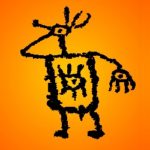
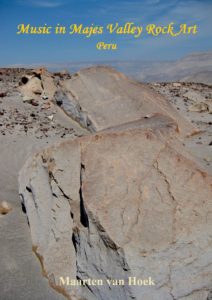
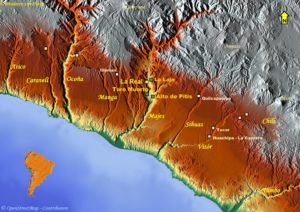
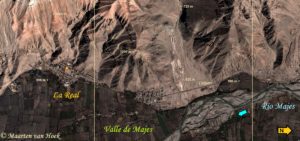
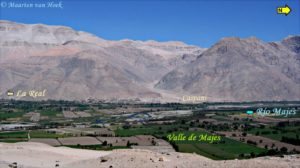

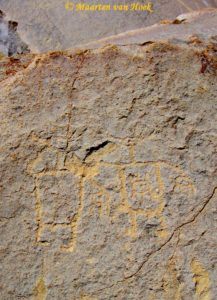
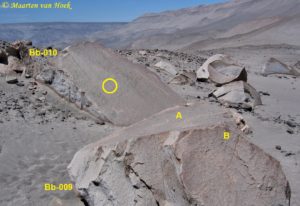
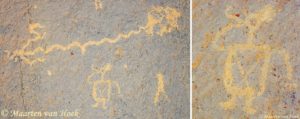

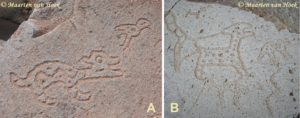
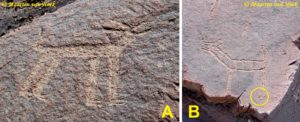
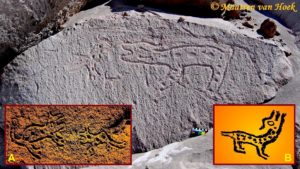
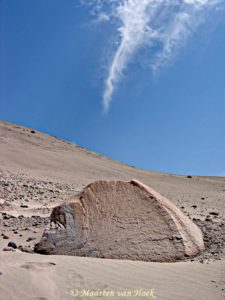
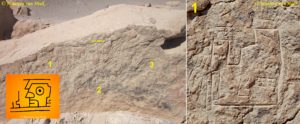
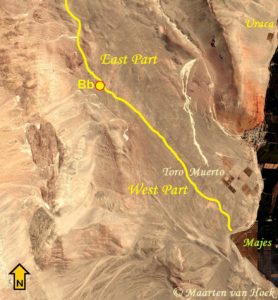
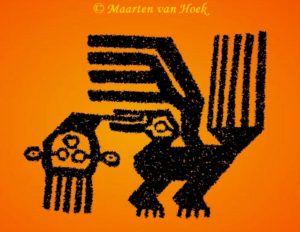














Leave a Reply